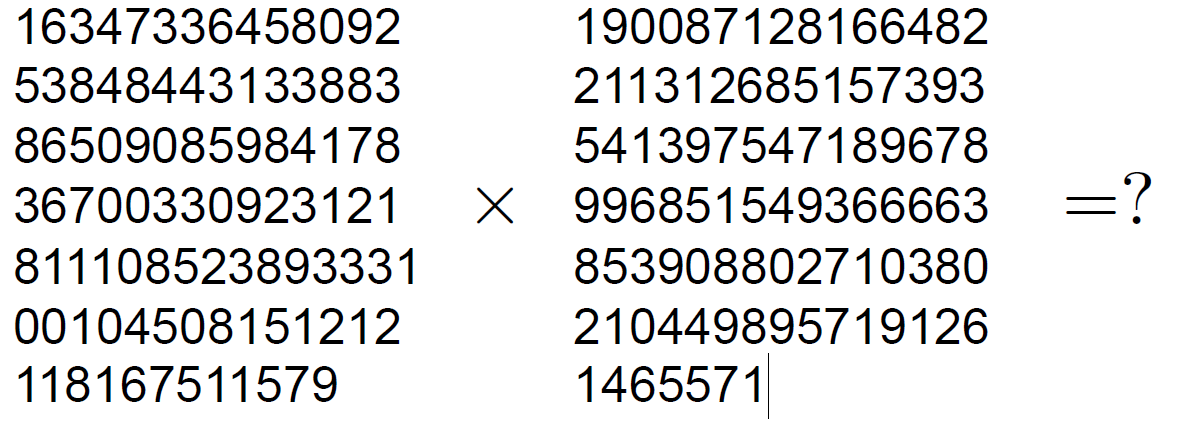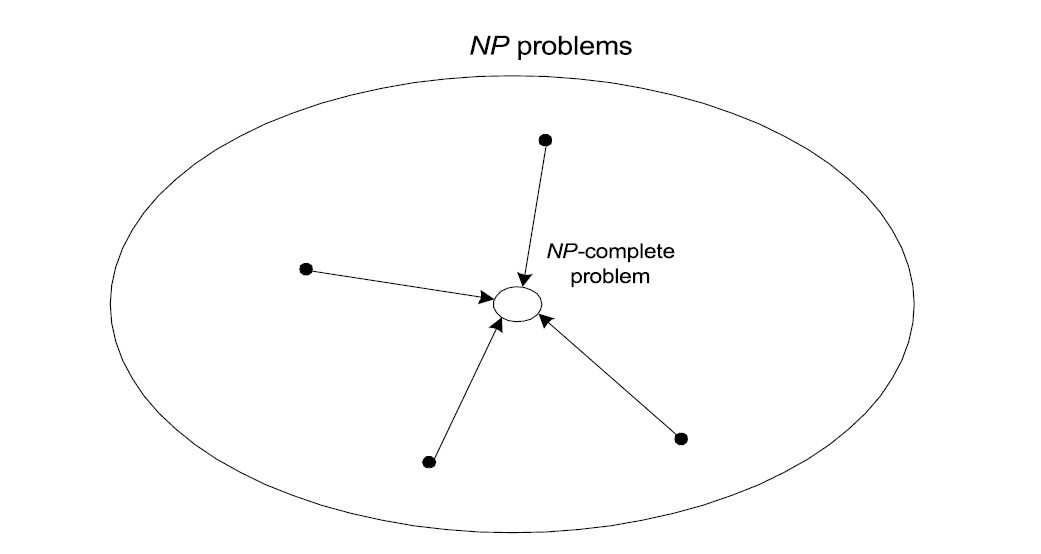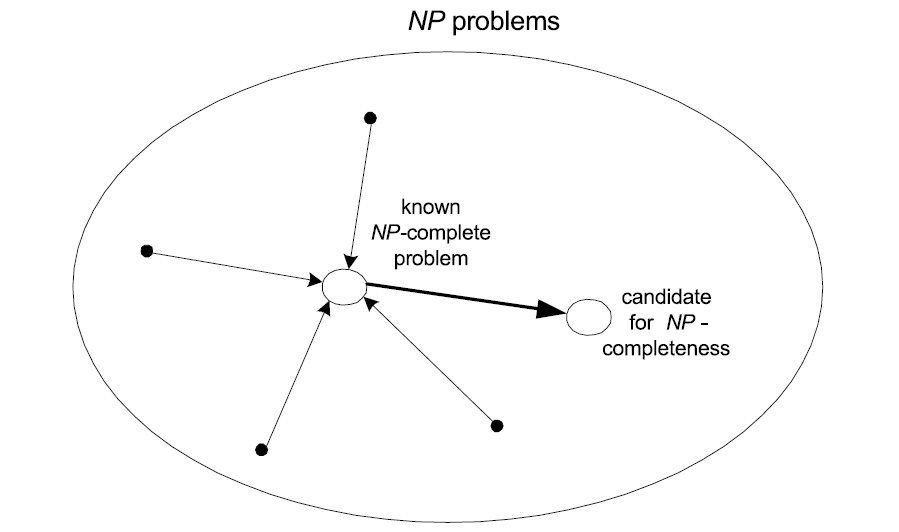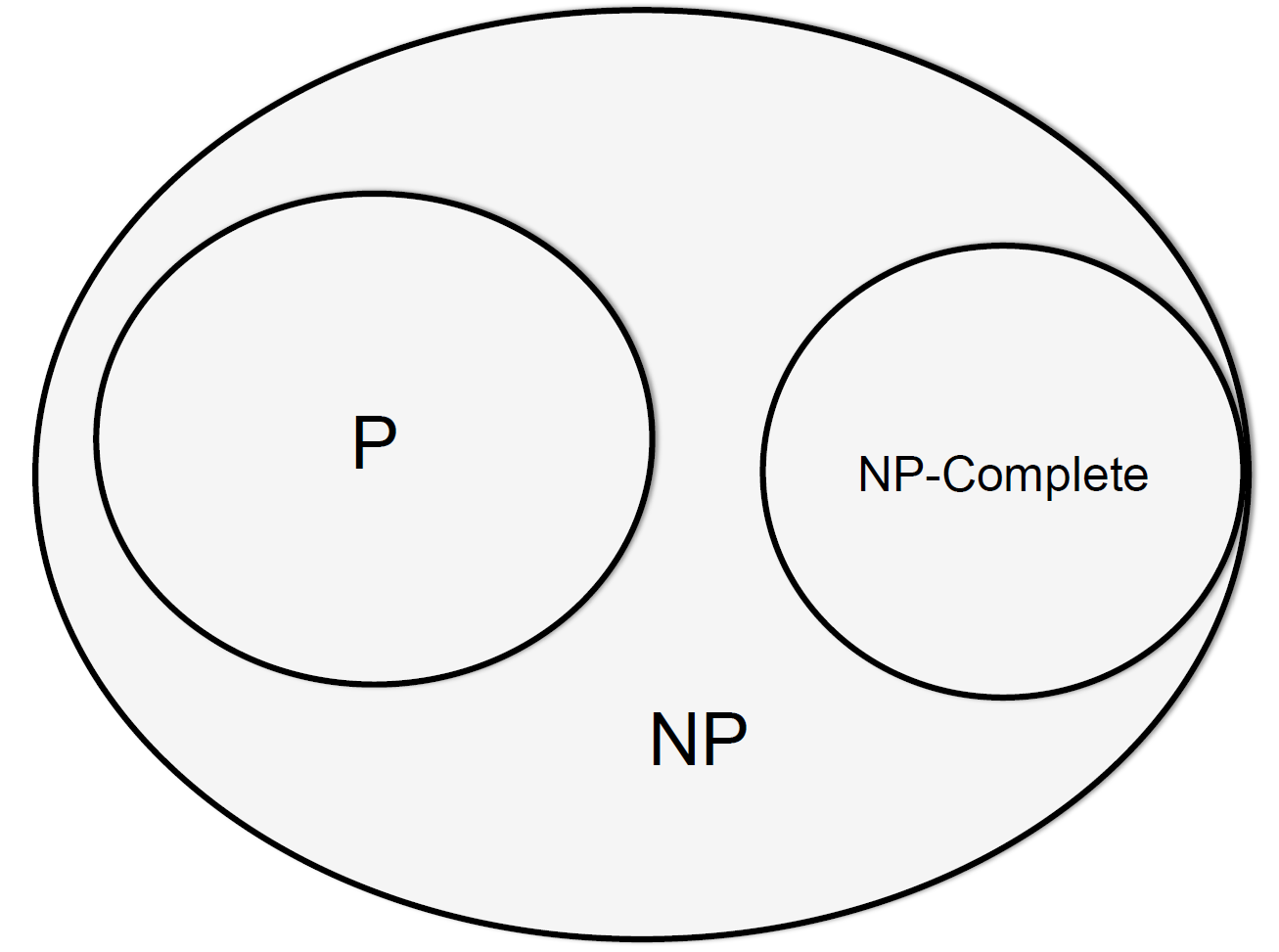P vs. NP
One of the fundamental mathematics problems of modern times.
Millennium Prize Problems
- Birch & Swinnerton-Dyer Conjecture
- Hodge Conjecture
- Navier-Stokes Equations
- P vs. NP
- Poincare Conjecture
- Riemann Hypothesis
- Yang-Mill Theory
P vs NP asks whether every problem whose solution can be quickly verified (technically, verified in polynomial time) can also be solved quickly (again, in polynomial time).
Halting Problem: Some problems can't be computed:
Unsolvable (by computer) Problem
-
Suppose that you could write a program
boolean halts(Program p, Input i);
that returns true if p halts on input i, and false if it doesn’t.
-
Then I can write
boolean loopIfHalts(Program p, Input i) { if (halts(p,i)) while (true) ; else return true; }
which loops if p halts on input i, and true if it doesn’t
Prime factor
In number theory, integer factorization is the decomposition of a composite number into a product of smaller integers. If these integers are further restricted to prime numbers, the process is called prime factorization.
Semi-primes are the product of two primes. These are the hardest instance of the prime factorization problem.
Which is harder?


Factoring is in NP
- If given a solution we can check it quickly
Problem Types
- Optimization problem: find a solution that
maximizes or minimizes some objective function - Decision problem: answer yes/no to a question
- Many problems have decision and optimization
versions.- e.g.: traveling salesman problem
- optimization: find Hamiltonian cycle of minimum length
- decision: find Hamiltonian cycle of length ≤ m
- Decision problems are more convenient for
formal investigation of their complexity.
Class P
- P: the class of decision problems that are
solvable in O(p(n)) time, where p(n) is a
polynomial in problem’s input size n - Examples:
- searching
- element uniqueness
- graph connectivity
- graph acyclicity
- primality testing (finally proven in 2002)
Class NP
- NP (nondeterministic polynomial): class of decision
problems whose proposed solutions can be verified in
polynomial time = solvable by a nondeterministic
polynomial algorithm - A nondeterministic polynomial algorithm is an abstract twostage
procedure that:- generates a random string purported to solve the problem
- checks whether this solution is correct in polynomial time
By definition, it solves the problem if it’s capable of
generating and verifying a solution on one of its tries
Example: CNF satisfiability
Problem: is a boolean expression in its conjunctive normal form
(CNF) satisfiable, i.e., are there values of its variables that makes it
true?
This problem is in NP. Nondeterministic algorithm:
- Guess truth assignment
- Substitute the values into the CNF formula to see if it evaluates to true
Example:
A B C D E 0 0 0 0 0 … 1 1 1 1 1 Checking phase:
Some NP Problems
• Circuit Routing
• Travelling Salesman
• Knapsack problem
• Protein Folding
• Theorem Proving
• Crossword puzzle generation
• Sudoku
NP-Complete
A decision problem D is NP-complete if it is as hard as any
problem in NP, i.e.,
- D is in NP
- every problem in NP is polynomial-time reducible to D

Other NP-complete problems obtained through polynomial-time
reductions from a known NP-complete problem

- Examples: TSP, knapsack, partition, graph-coloring and
hundreds of other problems of combinatorial nature (with a few exceptions, such as MST and shortest path).

Knapsack?
-
Didn’t we solve this by Dynamic
Programming? -
For a knapsack of capacity W, and n items,
how big is the table? n × W -
What’s the efficiency of the Dynamic
Programming Algorithm?A. O(n) B. O(W) C. O(nW) D. O(Wn) E. None of the above
Complexity of Dynamic Programming
algorithm is in O(nW)
- So why is Knapsack in NP?
DEFINITION 1 We say that an algorithm solves a
problem in polynomial time if its worst-case time
efficiency belongs to O(p(n)) where p(n) is a polynomial
of the problem’s input size n. [Levitin, p. 401]
P = NP ?
- P = NP would imply that every problem in NP, including all NP-complete
problems, could be solved in polynomial time - If a polynomial-time algorithm for just one NP-complete problem is
discovered, then every problem in NP can be solved in polynomial time,
i.e., P = NP

- Most (but not all) researchers believe that P ≠ NP , i.e., P is a proper
subset of NP
Computation Complexity
A whole field of study that investigates classes of problems.
Co-NP is the class of all problems where a wrong answer can be quickly rejected
PSPACE - The set of all problems that can be solved using only a polynomial amount of addition space using a deterministic algorithm
NPSPACE The - the set of all problems that can be solved using only a polynomial amount of addition space using a nondeterministic algorithm
EXP - The set of all problems solvable in exponential time
BPP - Bounded-Error Probabilistic Polynomial-Time -The class of feasible problems given a genuine random-number source
EXPSPACE - The set of all problems that can be solved using only an exponential amount of addition space
